By now you've had time to digest the latest update to Jeff Borzello's college basketball Way-Too-Early Top 25. But as Jeff himself points out, it actually isn't "way too early" anymore. We are just 23 days away from the scheduled start of the season.
With that in mind, I decided that it's high time to once again identify the "fatal flaws" that are being exhibited by, um, the strongest teams in the nation. What can I say? I see the glass as half-empty.
Here's Jeff's top 25, with the biggest concern I see standing in the way of each team's title hopes.

1. Baylor Bears
Flaw: Shooting the ball
Baylor is an excellent choice at No. 1. The Bears in all likelihood would have earned a No. 1 seed if the 2020 NCAA tournament had happened, and Scott Drew brings back far more experience than other likely top seeds from last March, such as Gonzaga, Kansas and Dayton. Jared Butler, Davion Mitchell, MaCio Teague and Mark Vital have proven that they know how to get the job done, particularly on defense.
They just don't shoot the ball all that well. BU converted 46.3% of its 2s and 33.5% of its 3s in Big 12 play last season. Granted, the Bears scored a decent number of points by keeping turnovers to a minimum and crashing the offensive glass. But can a team win it all with such so-so shooting? The past five national champions, for example, have on average hit 54.6% of their 2s and 38.7% of their 3s in conference play (though those teams did play with a more forgiving 3-point line).
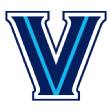
2. Villanova Wildcats
Flaw: Meager scoring inside the arc
Villanova is a perimeter-oriented team in terms of shot selection, but what changed last season was that the Wildcats' relatively infrequent 2-point attempts didn't go in as often as they used to. Seton Hall, Creighton and Butler all shot a higher percentage inside the arc in Big East play than did Jay Wright's team.
That qualified as a surprise coming from a program that connected on an unbelievable 62.9% of its 2s in conference play in 2018. Maybe Villanova will display more efficiency in the paint this season. Jermaine Samuels in particular has shown that he can put points on the board while working close to the basket.

3. Gonzaga Bulldogs
Flaw: Interior D
Mark Few's team allowed opponents to make 47% of their 2s last season, the highest conversion rate permitted by a Gonzaga defense in 14 years. That figure wasn't necessarily a byproduct of a tough nonconference schedule, either. West Coast Conference opponents shot 48% inside the arc against the Bulldogs.
Drew Timme posted the highest block percentage on the team as a freshman, and now the 6-foot-10 sophomore will play a more prominent role in the wake of Filip Petrusev's decision to move on to the next level. At 6-foot-8, Anton Watson also figures to play a key role in 2020-21 after missing the last half of his freshman season because of a shoulder injury. Sophomore Pavel Zakharov and redshirt freshman Oumar Ballo could also make an impact down low.

4. Virginia Cavaliers
Flaw: Putting too few points on the board
For years, Virginia has faced a mostly mistaken presumption that its offense is prone to "droughts." Last season, on the other hand, the presumption was accurate. The Cavaliers mustered just 0.93 points per possession in ACC play. Naturally, the defense was outstanding (allowing just 0.88 points per trip against conference foes), but the league's No. 14-ranked offense limited the Hoos' overall performance.
Marquette transfer Sam Hauser should provide a lift on offense, and Tomas Woldetensae led Virginia in made 3s last season. If Tony Bennett's men can hit their shots in 2021, a No. 4 national ranking might be too low.
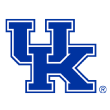
5. Kentucky Wildcats
Flaw: Extreme discontinuity (even by Kentucky standards)
Keion Brooks is the only player on John Calipari's roster who averaged more than 15 minutes per game in a Kentucky uniform last season (and he clocked in at 15.1). Naturally, the Wildcats have brought in a host of talent to address this situation, starting with Wake Forest transfer Olivier Sarr and highly touted freshman B.J. Boston.
If anyone can throw virtually an entire rotation together from scratch and have it produce at a national-title-contending level, it is surely Calipari. Just the same, a roster that returns less than 10% of its possession minutes from the previous season faces steep historical odds.

6. Iowa Hawkeyes
Flaw: Not enough stops
Last season, the Hawkeyes ranked No. 12 in Big Ten play in terms of points allowed per possession, ahead of only Nebraska and Northwestern. The conference faced little resistance at the rim, for example, making 52% of 2s against Iowa. Luka Garza is a clear threat to sweep the national player of the year awards, but the Hawkeyes will have to take a significant step forward on D to perform at a top-10 level nationally. And if that doesn't happen? Iowa games will be highly entertaining to watch because these guys can flat-out score.
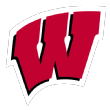
7. Wisconsin Badgers
Flaw: Perimeter dependence
The Badgers put on a show from beyond the newly repositioned arc in 2019-20, draining 36% of their 3s in Big Ten play and launching nearly 44% of their shot attempts from deep. Micah Potter, D'Mitrik Trice, Brad Davison and Aleem Ford all return for Greg Gard this season, and it's a safe bet that opposing defenses will again be stretched. If there's one concern on offense for the Badgers, however, it's that 3s and turnovers were pretty much the only categories in which the team excelled. In conference play, this was a below-average 2-point-shooting team that said no thanks to offensive boards and almost never went to the line.

8. Illinois Fighting Illini
Flaw: Way too many "offensive rebound opportunities"
After we dinged Baylor for poor shooting from the floor (see above), let the record show that the Fighting Illini posted even more meager results last season in Big Ten play. Brad Underwood's men connected just 29% of the time on their 3s against conference opponents, and the team's 2-point success rate also clocked in at below league average. Ayo Dosunmu, Kofi Cockburn & Co. managed to work around this problem by taking care of the ball and performing well on the offensive glass. Make no mistake: More accuracy this season would kick this offense into a higher gear.
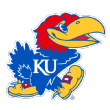
9. Kansas Jayhawks
Flaw: Inexperience
Marcus Garrett and Ochai Agbaji have played more than 4,000 combined minutes at Kansas. The rest of Bill Self's roster for 2020-21 has logged fewer than 3,000. In other words, KU will require significant contributions from the likes of David McCormack and freshman Bryce Thompson now that both Devon Dotson and Udoka Azubuike are gone. Then again, a step back at Kansas still leaves the Jayhawks near the top of the national pecking order. KU has earned a top-four seed in the past 19 NCAA tournaments.

10. Duke Blue Devils
Flaw: Youthful questions
My colleague Mr. Borzello put it well in ranking the Blue Devils at No. 10: "Relying on newcomers is nothing new for Mike Krzyzewski, but it's a little bit different when there's no Zion Williamson, no RJ Barrett or no Cam Reddish." Freshmen such as Jalen Johnson and Jeremy Roach will team with veterans such as Matthew Hurt and Wendell Moore this season, as Duke seeks to extend its incredible decade-plus run of top-10 finishes in adjusted offensive efficiency at KenPom.

11. Tennessee Volunteers
Flaw: Turnovers
The Volunteers gave the ball away on 21% of their possessions in SEC play a year ago. That fact alone meant that an offense that was making shots at an average rate nevertheless clocked in as below average in SEC terms. Tennessee just didn't get enough chances to score, and in fact only Vanderbilt ranked lower in the league in terms of shot volume. If the Vols are going to live up to this lofty preseason ranking, Santiago Vescovi, Josiah-Jordan James and freshmen Jaden Springer and Keon Johnson will have to value the rock.
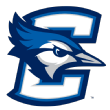
12. Creighton Bluejays
Flaw: Defensive rebounding
The high-scoring Bluejays were hammered on the defensive glass in 2019-20, as Big East opponents pulled down nearly 33% of their missed shots against CU. This will not come as news to Greg McDermott, and he is doubtless looking to 6-foot-11 Jacob Epperson and/or 7-foot freshman Ryan Kalkbrenner to stop this bleeding. The rewards to be reaped from even normal defensive rebounding could be considerable for a team that shoots the lights out and might have the best player in the Big East in Marcus Zegarowski.

13. Michigan State Spartans
Flaw: Surplus of supporting players
Cassius Winston and Xavier Tillman are both gone, and Tom Izzo will need to find scoring from a talented group that nevertheless lacks a proverbial "go-to" guy. Then again, maybe the Spartans can get this done by committee. Rocket Watts is statistically likely to improve his 3-point accuracy this season, Marquette transfer Joey Hauser drained 42% of his 3s as a freshman in Milwaukee, and Aaron Henry and Gabe Brown are seasoned juniors. This projects to be an excellent defense, and if Izzo can find a rotation that also scores points, MSU can compete for a fourth consecutive regular-season Big Ten title.

14. Texas Tech Red Raiders
Flaw: Unfamiliarity with each other
Chris Beard has brought a good deal of talent to Lubbock for this season, up to and including top-25 recruit Nimari Burnett, UNLV transfer Joel Ntambwe, VCU transfer Marcus Santos-Silva and Georgetown transfer Mac McClung. If all of the newcomers can meet Beard's standards on defense and perform effectively with returning Red Raiders such as Kyler Edwards and Terrence Shannon, this could be a really good team. One question heading into what could be a somewhat abbreviated or -- who knows? -- severely reduced season is whether a shorter runway will hurt some teams more than others.
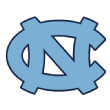
15. North Carolina Tar Heels
Flaw: Lingering effects
North Carolina posted a most un-North-Carolina-like 14-19 record last season, as injuries suffered by Cole Anthony, Brandon Robinson and others took their toll. Now Anthony's preparing for this month's NBA draft, Robinson has completed his four years of eligibility, and Roy Williams is hoping Garrison Brooks and Armando Bacot can put the Tar Heels back on the right track. If freshmen such as Day'Ron Sharpe and Caleb Love live up to their billing (and if this defense can force a few more turnovers), last season will be a distant memory.

16. Arizona State Sun Devils
Flaw: Reliance on takeaways
No defense forced more turnovers in Pac-12 play than the Sun Devils in 2019-20, but when those opponents managed to hold on to the ball, they shot it pretty well. On each "effective" (turnover-less) possession, the ASU defense allowed 1.27 points. Lowering that number would be a major step forward, but make no mistake: Arizona State should be able to score its way out of some tight spots. Remy Martin and Alonzo Verge form one potent duo.

17. Oregon Ducks
Flaw: Not holding opponents to one shot
The Ducks were outstanding on offense in 2019-20, and it's conceivable that Dana Altman's team could be nearly as good on that side of the ball this season. Chris Duarte and Will Richardson are back, and they'll be joined by a flock of transfers. The only thing: Oregon needs to take care of business on its defensive glass. The Ducks came in a notch below league average in Pac-12 play in that category last season.

18. West Virginia Mountaineers
Flaw: Perimeter shooting
The Mountaineers shot just 26.4% on their 3s in Big 12 play last season. Perhaps Miles McBride and/or redshirt freshman Jalen Bridges can hit some outside shots in 2020-21. Certainly, a second consecutive season of sub-27% shooting from beyond the arc in conference play would be a mathematical stretch. Nevertheless, opposing defenses will assume that West Virginia isn't much of a threat from deep until events prove that is no longer the case.

19. UCLA Bruins
Flaw: Playing average D
We'll give Mick Cronin a do-over on the defense his team played in his first season with the Bruins. It wasn't awful, by any means, but allowing conference opponents just more than a point per possession in a league in which the average was (well, this is a coincidence) a point per possession is not what we're used to seeing from the longtime Cincinnati coach. Expect that number to improve with most of last season's rotation returning.

20. Texas Longhorns
Flaw: Too few chances to score
The Longhorns had the worst offense in Big 12 play last season, meaning Texas (0.932 points per possession) was a hair worse than Kansas State (0.935). What's interesting is that Shaka Smart's guys were pretty close to average in terms of shooting accuracy. The problem was a few too many turnovers and way too few offensive boards.

21. Houston Cougars
Flaw: Poor 2-point shooting
Only SMU scored more efficiently than Houston in American play last season, which is pretty remarkable given that the Cougars made just 44.9% of their 2s against conference opponents. Kelvin Sampson's guys were great at just about everything else on that side of the ball, especially offensive rebounding. The second chances might become scarce, however, because Nate Hinton kept his name in the draft and Fabian White suffered an injury. Better efficiency close to the basket would provide a lift.

22. LSU Tigers
Flaw: Pressuring the ball on D
SEC opponents gave the ball away on just 14.5% of their possessions against the Tigers last season. Although few teams nationally attempted shots with the same frequency as LSU (thanks to a low turnover rate and excellent offensive rebounding), that advantage was diminished by the fact that opponents very nearly kept pace with Will Wade's men in terms of shot volume.

23. Florida State Seminoles
Flaw: Departures
Leonard Hamilton lost Devin Vassell, Trent Forrest and Patrick Williams from a rotation that performed to a high level on both sides of the ball. This season, M.J. Walker returns, and Scottie Barnes might be the most highly regarded freshman in the ACC, but replacing all those key contributors from a year ago will be difficult.
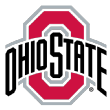
24. Ohio State Buckeyes
Flaw: Lack of specialization
Aside from 3-point accuracy (Ohio State had it, but so did its Big Ten opponents), it's difficult to point to any performance category from conference play last season in which the Buckeyes stood out for good or bad. Now, a host of rotation players have moved on. What will E.J. Liddell, C.J. Walker & Co. build their identity around this season? The answer could be "offense" if Harvard transfer Seth Towns recovers from his knee injury.
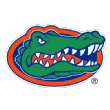
25. Florida Gators
Flaw: Bad luck
The Gators outscored their SEC opponents by a healthy margin last season yet came away with a relatively modest 11-7 conference record. Five of UF's seven conference losses came by seven points or fewer. If Michael White's team can play to the same level this season while being just a bit more clutch, the improvement on the bottom line could be significant.
